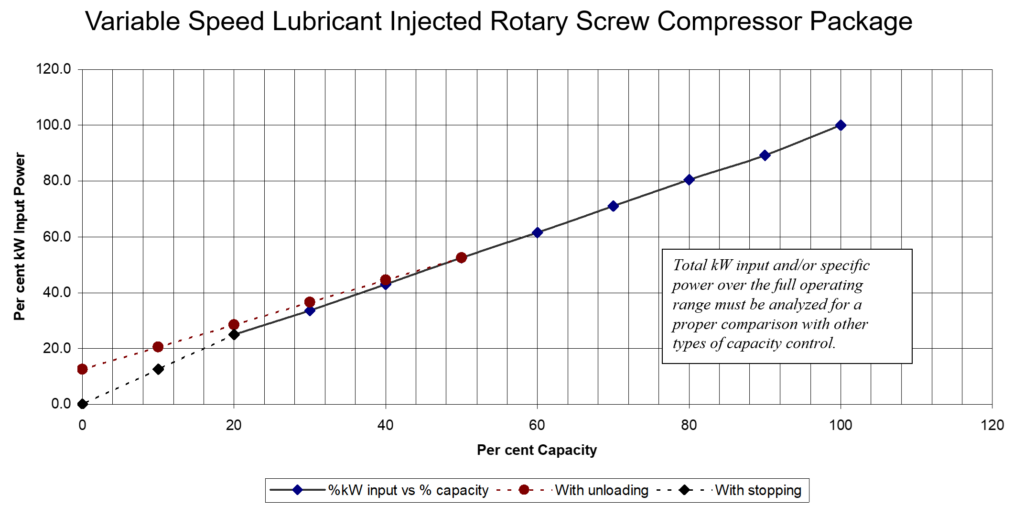In this blog post, we will discuss the fifth of five industrial compressor capacity control modes. A very efficient method of controlling a compressor at part load using variable speed mode.
With this type of compressor, an electronic drive is fitted to a specially designed compressor with air end components matched to the intended speed range to maximize efficiency. With positive displacement compressors, every revolution of the screw element shaft will produce a constant volume of compressed air, so therefore if the shaft rotations per minute change, so will the flow output of the compressor. With variable speed drive compressors, the power consumption varies nearly one-to-one with the change in flow output, making this type of compressor a very good choice for efficiently matching varying loads.
Variable speed compressors can be lubricant injected style or lubricant free. This type of compressor is controlled with an electronic control that senses the output pressure and speeds up or slows down the compression element to maintain a constant pressure output using PID control. VSD or VFD compressors (the term is interchangeable in the industry) can operate successfully with smaller storage receiver sizes, but good control still requires some storage, especially if the VSD compressor must operate with other fixed speed compressors.

The typical recommended storage size is between 1 to 3 gal times the rated cfm capacity of the largest compressor in the system. With larger sized storage, the changes in pressure when compressors are switching on and off is slowed down substantially, making control less complicated.
It is important to size VSD compressor correctly so that they do not run near the lower end of their speed range for significant hours. It is also important to sized the VSD compressor as the largest compressor in a system of multiple compressors, or a problem called control gap will occur. Typically, the VSD needs to be one or two sizes larger than the compressor with which it must work. The variable band of the compressor must be equal to or larger than the largest fixed speed compressor.
It is important to keep VSD compressors cool and clean to avoid overheating problems that might affect the reliability of the electronic drive. Most often, the installation of a VSD compressor will save significant energy by almost eliminating inefficient unloaded run time in compressed air systems — and stabilizing system pressure to lower than typical levels.
The five different capacity control modes for lubricated screw compressors are:
- Start/stop — simply starting and stopping the compressor using pressure switch control. Very efficient but can only be used on small compressors.
- Modulation — choking of the inlet flow of air using an inlet valve. Very inefficient at part loads.
- Load/unload — Loading and unloading a compressor using inlet valve control and sump blowdown. Moderately efficient if the compressor has access to large storage.
- Variable displacement — Opening up ports in the screw to bypass the compression element. Good efficiency if set up correctly.
- Variable speed drive — Speeding up or slowing down the compressor to vary its output flow. Most efficient operation at part load if applied properly.
This completes the series about compressor control.
Filed Under: Air Compressors, Air Preparation, Components Oil Coolers, Compressed Air Technologies, Engineering Basics, Technologies